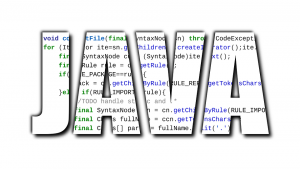The best resources for deciphering Java application behaviour and resolving performance problems are Java profilers. They keep an eye on how the byte code is being executed by the JVM and report on things like class loading, heap memory utilisation, garbage collection, and exceptions.
There are instances when we must be aware of the application’s internal performance. Writing code that simply executes is insufficient for an efficient program; we also need to understand its internal performance, including memory allocation, the effects of concurrent execution, potential improvement areas, etc. The profilers assist us in understanding the byte code level execution status of the JVM.
Numerous Java profilers are accessible. There are a few popular Java profiles including JProfiler, YourKit, Java VisualVM, and the Netbeans Profiler. We will only talk about JProfiler and Java VisualVM in this article. Check out the Java course online to learn more.
JProfiler
One of the best Java profilers available is JProfiler. It is a decision that many developers find advantageous. For viewing system performance, memory use, possible memory leaks, and thread profiling, it offers an easy-to-use user interface.
We can simply track performance issues and optimise our Java program by utilising its broad features.
This cross-platform utility is available for download on a variety of operating systems, including Windows, Mac OS, Linux, Solaris, and others. Additionally, it supports a variety of IDEs, including NetBeans, Eclipse, IntelliJ, etc.
To track the performance issues in many areas, it offers numerous functions like Memory Profiling, Heap Walker, CPU profiling, Thread Profiling, Databases, etc.
Applications that are both local and remote can be developed using the JProfiler. Java applications running on a remote server can be profiled with JProfiler without the need to install any additional components.
Additionally, it offers support for NoSQL and SQL databases. It is compatible with JPA/Hibernate, Hbase, MongoDB, Casandra, and JDBC profiling.
JProfiler’s Features
JProfiler offers a number of powerful features to identify and monitor performance problems across several domains. The following are some of the JProfiler’s primary features:
Modes of Operation
The following modes of operation are offered by JProfiler:
- Live profiling of a local session
- Live profiling of a remote session
- Offline profiling and triggers
- Snapshot comparisons
- Viewing an HPROF snapshot
- Request tracking
Heap Walker
By carrying out the selection procedures, the Heap Walker enables us to snap a picture of the heap and drill down to the object of interest. The five viewpoints of the heap walker are as follows:
- Classes
- Allocations
- Biggest objects
- References
- Data
- Time
- Inspections
- Graph
CPU Profiling
To optimise the Java project, JProfiler provides multiple methods for logging the call tree. For every view, we have the option to select the thread, thread group, and thread status. On a method, class, component, or package level, all viewpoints can be gathered. The following element is present in the CPU view section:
- call tree
- Hot spots
- Call graph
- Method statistics
- call tracer
Memory Profiling
The memory view component of JProfiler shows the allocation spot information and offers a dynamic picture of memory consumption. Every view can show both garbage-collected and active objects, and it offers multiple aggregation levels.
It contains the following components:
- All objects
- Recorded object
- Allocation call tree
- Allocation hot spots
- Class tracker
Thread Profiling
JProfiler provides the following views for Thread profiling:
- Thread History
- Thread Monitor
Thread Dumps
Monitor Profiling
JProfiler provides the following views for the monitor profiling:
- Current Locking Graph
- Current Monitors
- Locking History Graph
- Monitor History
- Monitor usage statistics
VM Telemetry
JProfiler provides several telemetry views to analyse the internal state of the JVM. It offers the following views:
- Heap
- Recorded Objects
- Recorded Throughput
- GC activity
- Classes
- Threads
- CPU load
Databases
JProfiler provides specific probes for the following databases:
- JDBC
- JPA/Hibernate
- HBase
- Cassandra
- MongoDB
- JEE & Probes
It offers probes for the following:
- JDBC
- JPA/Hibernate
- Servlets
- Netty
- HTTP requests
- Web services
- JMS
- JNDI
- RMI
- Files
- Sockets
- Processes
Probes show the following information about a component:
- Timeline
- Control Objects
- Hot spots
- Telemetries
- Events
Visual VM Java Profiler
Another well-known name in the Java profilers list is Visual VM. It offers reliable and easy-to-use profiling tools for Java apps. It comes pre-packaged with the Java Development Kit (JDK) by default. This tool’s ability to profile is reliant on other tools, including jconsole, jstat, jstack, jinfo, and jmap.
The ability to create plugins to expand the Java VisualVM’s functionality is a significant benefit. We may also add these plugins to the update centre that is already built in.
For Java applications, it offers both local and remote memory and CPU profiling. In order to connect it to distant apps, we must supply credentials.
SSH tunnelling is not supported by VisualVM.
Features of Visual VM
Using many vendors, VisualVM offers a way to monitor and troubleshoot Java programs running on Java 1.4+. It makes use of a number of technological agents, including Attach API, JMX, jvmstat, and Serviceability Agent (SA).
It offers ideal answers to all of the needs of end users, system administrators, quality engineers, and developers.
The following are some of the Visual VM’s primary features:
- Detects Local And Remote Java Processes
It is possible for the Visual VM to identify and list the active programs, both locally and remotely. The remote hosting computer has to have jstatd running for this to happen. Using the JMX connection, we can also manually specify the application.
- Display Environment And Process Configuration
Details about the environment and process setup, including PID, main class, supplied parameters, JDK home, JVM version, JVM flags, and system properties, are displayed.
- Track Memory and Process Performance
It keeps track of memory usage and program performance. It shows heap and metaspace size, CPU utilisation, GC activity, total loaded class, permanent generation memory, etc.
- Visualise Process Threads
In addition to aggregated running, wait, sleep, park, and monitor times, it presents all of the running threads visually as a timeline.
- Memory Usage And Profile Performance
Sampling and instrumentation profilers are both included in VisualVM to measure performance and memory utilisation. It can analyse a Java application’s performance and memory management using its basic profiling features.
- Acquire and Present Thread Dumps
It is capable of receiving and displaying thread dumps so that an instant internal study of the target process may be performed. It’s helpful in locating distributed deadlocks. Thread dumps of several processes taken simultaneously can be helpful in finding distributed deadlocks.
- Take And Browse Heap Dumps
In the event of an OutOfMemory error or request, it offers a.hprof memory snapshot. Debugging memory leaks and identifying inefficient heap utilisation are two of its benefits.
- Examine Core Dumps
Basic details about the crashed Java process and its environs can be read by VisualVM. It can open and extract a confined thread and heap dump, as well as read from a core dump.
- Examine the Application Offline
The VisualVM profiler has the ability to store runtime environments and application configurations. It can also capture thread and memory dumps and combine them into a single file for offline processing.
Conclusion Java Profilers is an important concept in Java. You can learn Java for free by checking our online Java course.

























